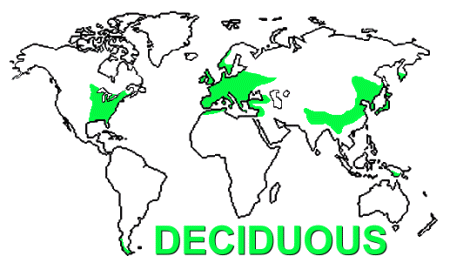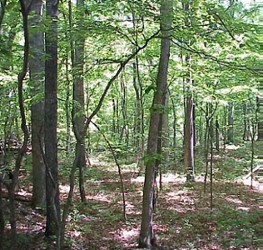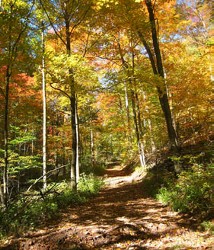 Deciduous forests are made up of trees that lose their leaves every winter; these forests can be found around the world at mid-latitudes, where the climate is moderate, with a longer growing season than taiga. Deciduous forest regions have a distinct summer and winter, with 75-150 cm of precipitation each year, and temperatures
Deciduous forests are made up of trees that lose their leaves every winter; these forests can be found around the world at mid-latitudes, where the climate is moderate, with a longer growing season than taiga. Deciduous forest regions have a distinct summer and winter, with 75-150 cm of precipitation each year, and temperatures Deciduous trees need more light than conifers, but they are much better at photosynthesis. They lose their leaves in winter to protect themselves from freezing; during the winter their need for water is greatly reduced. These forests allow light to penetrate to the forest floor, so there is a lot of plant life there, and rich habitats for a variety of animals.   Deciduous trees are broad-leaved, and include such varieties as poplar, maple, elm, oak and birch. Plants on the floor of a deciduous forest grow thickly. Animal life is abundant; many animals are active year-round. |